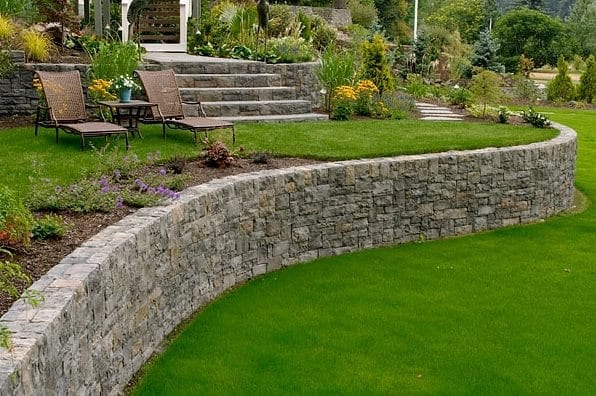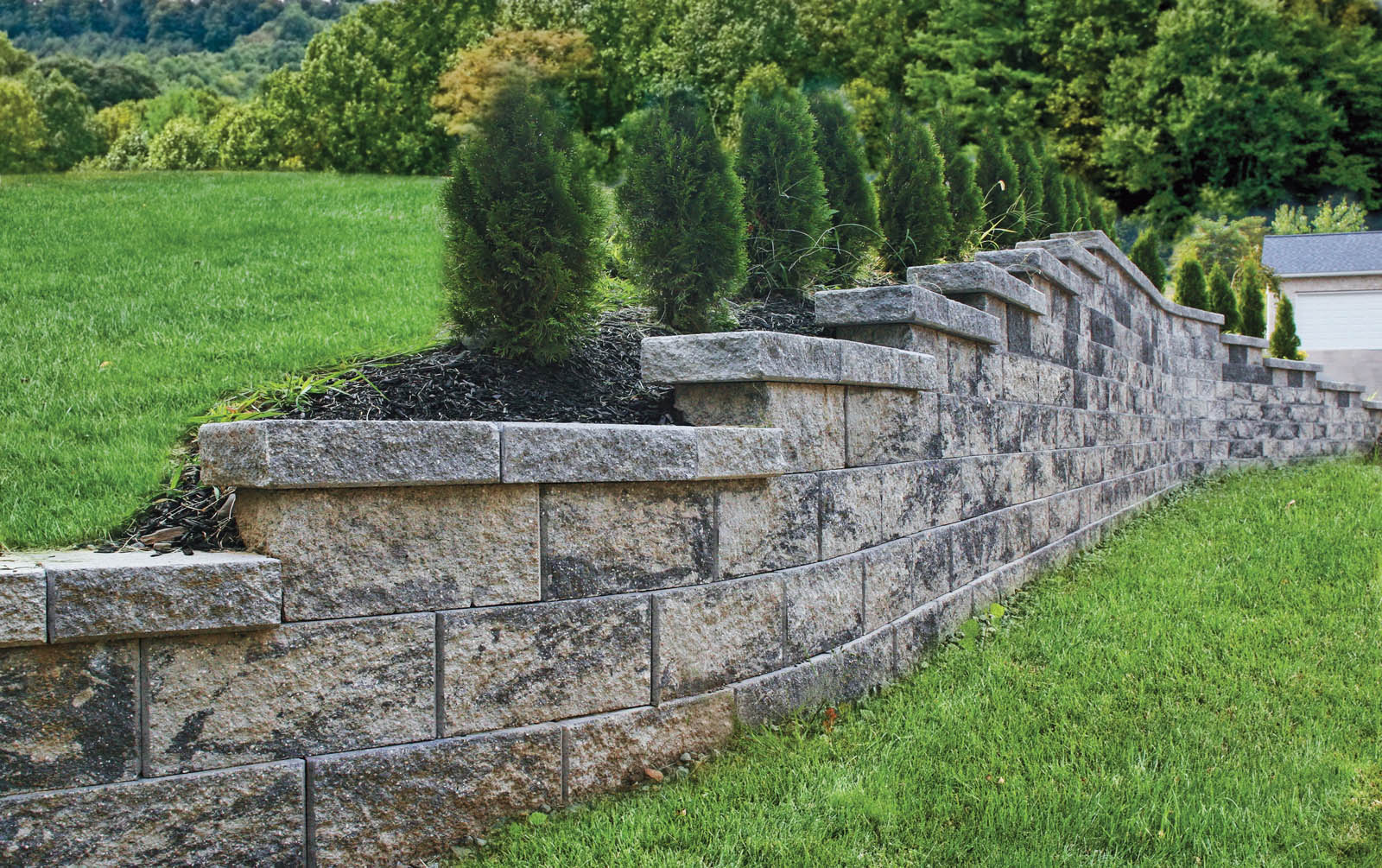Enhancing Building Stability: The Function of Retaining Walls in Dirt Retention and Disintegration Control
Maintaining wall surfaces stand as quiet guardians, playing a vital function in soil retention and disintegration control. By checking out the nuances of various kinds, design factors to consider, building methods, and upkeep ideas connected with retaining wall surfaces, a deeper understanding of their crucial function in enhancing building security emerges.
Relevance of Retaining Walls in Stability
The significance of maintaining wall surfaces in guaranteeing security within landscapes can not be overstated. Maintaining walls play a vital role in keeping back dirt, preventing disintegration, and developing level surfaces in sloped areas. By giving structural support, preserving walls assist to rearrange side stress caused by dirt, protecting against landslides and slippage. In addition to improving the visual allure of a residential property, retaining walls contribute to the general safety and security and functionality of outdoor areas.
Retaining walls are particularly vital in uneven or unequal surfaces where dirt disintegration is a typical incident. Without appropriate support, soil erosion can result in the deterioration of landscapes, jeopardizing the stability of structures and presenting dangers to citizens. Preserving wall surfaces work as barriers, stabilizing the soil and preventing it from changing downhill throughout hefty rainfall or various other ecological stress factors.
Furthermore, retaining wall surfaces provide long-term benefits by lowering maintenance prices linked with dirt erosion and land instability. By spending in properly designed retaining wall surfaces, home owners can make sure the long life and sustainability of their landscapes while advertising a secure and visually appealing setting.

Kinds of Retaining Walls for Erosion Control
Frequently utilized in landscape design and civil design projects, numerous types of retaining wall surfaces serve as reliable options for erosion control in varied terrain problems. Gravity keeping wall surfaces are strong structures that depend on their weight to resist the stress of the soil behind them. They are ideal for low to medium height applications and are typically made of concrete or rock. Cantilever keeping wall surfaces, on the other hand, are created with a thicker base and utilize a bar arm to withstand the dirt stress. These walls are generally used in areas where area is restricted.
For taller walls or where room is a restraint, anchored retaining walls are commonly used. When picking the suitable type of keeping wall for erosion control, aspects such as soil composition, wall elevation, and website problems need to be very carefully thought about to make sure lasting stability and effectiveness.
Layout Factors To Consider for Soil Retention
The elevation and area of the keeping wall surface are vital variables that influence the total design. Engineers have to also take into consideration the pressure put in by the preserved soil and prospective side loads to make sure the framework's stability over time.
Moreover, the product selection for the maintaining wall surface is essential in improving long life and functionality. Concrete, wood, gabion baskets, and all-natural rock prevail materials made use of in retaining wall building and construction, each with its unique advantages and factors to consider. Correct water drainage mechanisms, such as weep holes and French drains pipes, need to be integrated into the layout to prevent water build-up behind the wall, which can bring about structural failure and erosion.
Building And Construction Strategies for Retaining Walls
When executing design factors to consider for reliable dirt retention, the building techniques for retaining wall surfaces play a crucial duty in making sure structural integrity and lasting security. One common technique is the gravity wall surface, which depends on the weight and mass of the wall itself to stand up to the pressure of the retained dirt.
One more widely made use of building technique is the cantilevered wall surface, which uses a concrete slab structure that prolongs backwards right into the retained dirt. This style provides extra stability and appropriates for medium to high retaining wall surfaces. For taller structures, reinforced dirt techniques such as the usage of geogrids or soil nails can be used to improve the wall's toughness and stability.

Maintenance Tips for Residential Or Commercial Property Security
To ensure long-term property stability, normal upkeep methods are vital for protecting the integrity of retaining wall surfaces and protecting against erosion concerns. Cleaning up the surface of the retaining great site wall surfaces can likewise help maintain their architectural stability by eliminating dirt, particles, and greenery that might weaken the wall surface over time.
Along with visual examinations and cleaning, it is essential to examine the water drainage systems connected with the keeping wall surfaces. Making certain that drains pipes are clear of blockages and working properly can protect against water accumulation behind the walls, which can cause pressure and potential failure. Appropriately functioning water drainage systems are important for taking care of water flow and lowering the danger of disintegration.
Consistently checking and preserving preserving walls according to these tips can expand their life expectancy and contribute to the total stability of the residential or commercial property.
Verdict
Finally, retaining wall surfaces play an important role in boosting home security by avoiding dirt disintegration and keeping dirt in position. By using various kinds of keeping wall surfaces and taking into consideration style and building and construction strategies, residential or commercial property proprietors can efficiently regulate disintegration and preserve the honesty of their land. Regular maintenance of preserving wall surfaces is important to guarantee long-term stability and security versus erosion. Effectively constructed and kept keeping wall surfaces are essential aspects in maintaining building security.
For taller walls or where space is a constraint, anchored keeping walls are typically utilized. These walls make use of click for more cords or strips that are anchored into the dirt or rock behind the wall to provide added support. When selecting the ideal type of retaining wall surface for erosion control, factors such as dirt composition, wall elevation, and site problems need to be very carefully thought about to ensure durable stability and performance.
One usual technique is the gravity wall surface, which depends on the weight and mass of the wall surface itself to withstand the pressure of the preserved soil. Cleaning the surface area of the retaining wall surfaces can also aid preserve their architectural stability by getting rid of dirt, debris, and vegetation that might deteriorate the wall over time.